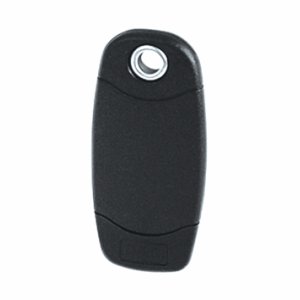Wireless access control - flexibility and convenience
Security has moved on a long way from the traditional lock and key systems and has now adopted wireless technology as a form of keyless security. This has opened up many different possibilities for commercial businesses who want to use modern communication technology to provide seamless and effective security systems, and which are also convenient and provide multiple additional functions.
Many different commercial organisations are now using wireless access control to manage their primary building security, such as educational establishments, healthcare facilities, retail, leisure and hospitality, manufacturing, warehousing and residential complexes. These all have different needs and practical requirements, but these can now be addressed by different types of wireless access control.
What is wireless access control?
Quite simply, wireless access control is the installation of a security system that doesn’t use traditional wiring and cabling. These older systems can involve complex wiring systems and infrastructure, all of which has to be physically connected via an electrical installation. These systems were effective in terms of security, but wireless systems are much easier to install and come in different forms which offer more functionality options.
Wireless access control uses communications technology such as radio frequencies (RF), near field communications (NFC) and Bluetooth to provide an effective security system which is flexible and convenient. The access control system connects and controls different devices which are used to access a building and manage the authorisation process.
Key components of a wireless access control system
- Readers – Also known as scanners, these are the form of technology which receives a signal from an item the person is carrying. This signal is the chosen form of wireless communication technology and will tell the reader whether the person has the required level of authority to access that particular zone of the building.
- Control panel – This is a central portal which manages the access control system. This is usually positioned by the main access point for a building, but can also control other access points in a building that the system is linked to.
- Locks – Any door in a wireless access control system will be fitted with an electronic lock which is waiting for a signal from the control panel to engage or disengage, depending on the level of authorisation a person has.
- Software – A wireless access control system will have software installed which manages the security system and which can be updated as necessary to improve and maintain the system.
- Communication method – The wireless communication technology preferred.
- Access method – The type of access method preferred, ie. card, fob, keypad/code, biometric feature or smartphone.
The benefits of wireless access control
There are various benefits to wireless access control which make it a popular technology for commercial businesses:
- Quick installation – With no direct wiring involved a wireless system can be installed and set-up very quickly.
- Scalability – As your needs change you can add to the access control system very easily and quickly.
- Keyless entry – Fast, effective and convenient entry for multiple people using the keyless technology that suits your users, such as proximity technology, Bluetooth technology, Biometric features, digital keypads or smartphone apps.
- Remote access – The central management system can be controlled remotely to monitor the system and revoke access as and when needed.
- Integration – A wireless system can be integrated and linked with other smart technologies, such as CCTV, intruder alarms, lighting, heating and fire alarms.
- Security features - There are various different security features which make wireless systems superior in terms of keeping a business safe from theft, trespass and vandalism. These include encryption protocols, updating software, multi-factor authentication processes and audit trails for monitoring failed attempts and assessing when access was granted and to whom.
What to think about when choosing a wireless access control system
There are still many challenges and considerations a business has to make when thinking about the best wireless access control system for your business. These challenges include:
- User expectancy – How many people will use the system and how frequently?
- Data privacy and compliance – Can the software system adequately control data and maintain compliance with regulations?
- Security requirements – What security risks does your site present and can these be adequately controlled by a specific technology or system?
- Remote management – Is your business set up for remote management? Can it react to security issues 24/7 and does it have the personnel and procedures in place to carry out effective round-the-clock security using an automated and unmanned system?
At MB Direct we have various wireless access control systems to meet different levels of security and sophistication, so we can work with you to design the perfect system to suit your security needs. So check out our range of access control systems and order online today.